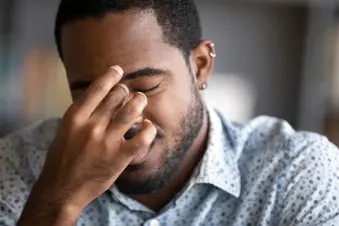
When your body doesn’t have enough iron, you typically feel it. Most commonly, low iron makes you tired, cold, and short of breath. Your skin may be pale and clammy, too.
Here’s why low iron saps your energy and takes your breath away. Your body needs iron to make hemoglobin, a substance in your red blood cells that helps them carry oxygen to your organs. Without enough hemoglobin, your tissues can't get enough oxygen to work like they should. When they struggle, you struggle.
When your hemoglobin drops below normal levels because of low iron, you have iron-deficiency anemia, the most common type.
Causes of Low Iron and Anemia
You can have low iron that leads to anemia for a number of reasons. Here are a few:
You don’t get enough iron from food. Iron-rich foods include meats, poultry, and fish, as well as cereal and bread with added iron, legumes, tofu, spinach, dried fruit, broccoli, and nuts. When your regular menu lacks iron, your body will run low on it.
Your body is changing. If you’re pregnant, breastfeeding, or going through a growth spurt, your body needs more iron -- and more red blood cells -- than usual. If you don’t get more, your iron levels will dip.
You have problems with your GI tract. Your body takes in most of its iron through the upper small intestine. Issues with your gastrointestinal (GI) tract, such as celiac disease or a problem after GI surgery, can keep you from absorbing iron through your gut. Some medications for reducing stomach acid can also lower iron absorption.
You have a condition that prevents your gut from absorbing iron. Chronic kidney disease is often to blame.
You’ve lost blood. When a lot of blood leaves your body, your iron levels plummet. This might result from bleeding in your gut, your period, or an injury.
Symptoms
Low iron affects everyone a little differently. Some people notice no symptoms at all. The most common effects of low iron include:
- Extreme fatigue and weakness
- Cold hands and feet
- Fast heartbeat (tachycardia)
- Chest pain
- Shortness of breath
- Headache
- Dizziness
- Irritability
- Pounding in your ears
You might also see physical changes that point to low iron. Common ones include:
- Sore or swollen tongue
- Brittle nails
- Hair loss
- Loss of color in your skin or yellow skin
You could also crave non-food items such as ice, starch, clay, or dirt.
Getting Diagnosed
Doctors have several tools to help them find out if you have low iron or iron-deficiency anemia. First, they’ll do a physical exam to check for symptoms.
Next, your doctor will order blood tests, including one called a complete blood count (CBC). This shows how many red blood cells you have, how big they are, and what shape they are. You may also get further tests specific to iron.
When you have low iron or iron-deficiency anemia, these test results usually show:
Low hemoglobin (Hg). Remember, iron helps make hemoglobin. So when iron is low, hemoglobin can run low. Normal is 13.2 to 16.6 grams per deciliter (g/dL) for men and 11.6 to 15 g/dL for women.
Low hematocrit (Hct). That’s the volume of red blood cells in your blood. Normal is 35.5 to 44.9 percent for adult women and 38.3 to 48.6 percent for adult men.
Low mean corpuscular volume (MCV). This test shows the size of your red blood cells. Normal is 80 to 95 femtoliters (fL).
Low ferritin. Ferritin is a protein in your blood that stores iron. When iron runs low, so does ferritin. Normal ferritin is 24 to 336 micrograms per liter (mcg/L) for men and 11 to 307 mcg/L for women.
Low serum iron (FE). This is a measure of the iron in your serum -- fluid in blood that isn’t part of the clotting process. A normal result is 60 to 170 micrograms per deciliter (mcg/dL).
High transferrin or total iron-binding capacity (TIBC). This is a measure of your blood's ability to attach itself to iron and move it around. A normal test result is 204 to 260 milligrams per deciliter (mg/dL).
You may also get other tests to help your doctor figure out why your iron is low, such as:
Endoscopy or colonoscopy. In these tests, a doctor looks at your GI tract through a tiny camera to see if problems there might be causing bleeding or interfering with iron absorption.
Pelvic ultrasound or uterine biopsy. If heavy periods are causing your iron loss, your doctor might order one of these tests to understand what’s to blame.
The treatment your doctor recommends for low iron or iron-deficiency anemia will depend on the cause.
Show Sources
SOURCES:
Cleveland Clinic: “Anemia,” “Iron in Your Diet.”
Mayo Clinic: “Iron-deficiency anemia,” “Enlarged spleen.”
Johns Hopkins: “Iron-Deficiency Anemia.”
American Society of Hematology: “Iron-Deficiency Anemia.”
National Institute of Diabetes and Digestive and Kidney Diseases: “Anemia in Chronic Kidney Disease.”